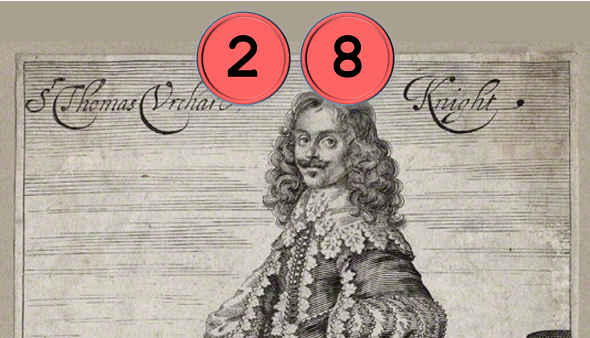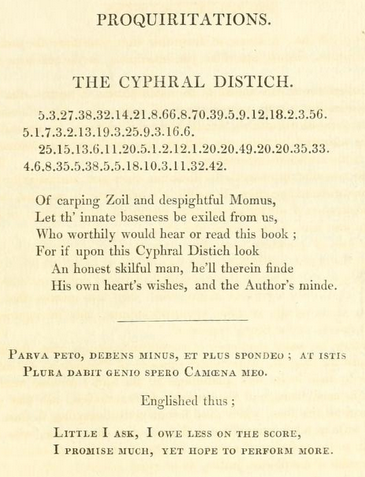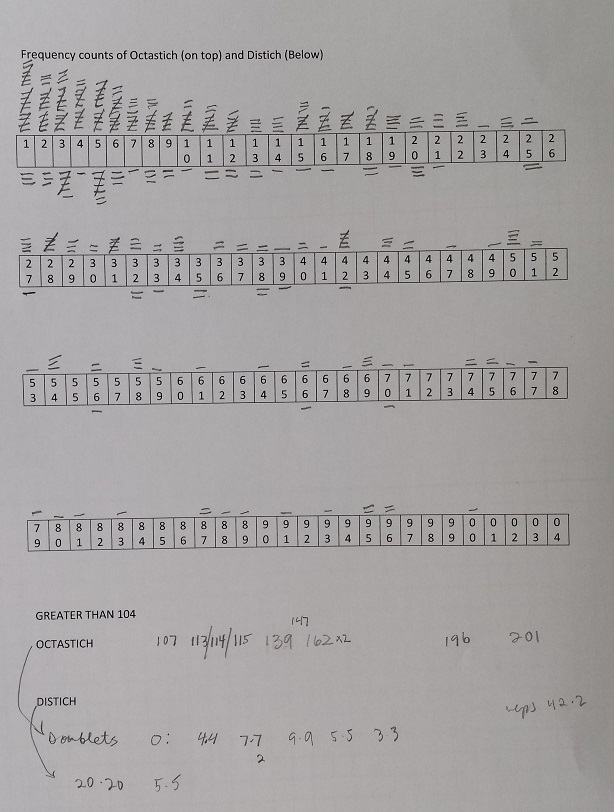Scotish poet Thomas Urquhart (1611-1660) left behind two encrypted poems. They have never been deciphered.
Click here for the complete top 50 list
Thomas Urquhart was a Scotish writer, translator and poet, most famous for his translation of French Renaissance writer Francois Rabelais.
Blog reader Hans Jahr from Slovakia made me aware of an encrypted poem Urquhart left behind. I blogged about this poem in 2014. Later Kent Ramliden from Florida told me that there is at least on more encrypted poem of Urquhart’s authorship. I blogged about it, too.
Poem 1 (Distich)
Urquhart’s first encrypted poem is a two-liner (distich):
Here’s a transcription:
5.3.27.38.32.14.21.8.66.8.70.39.5.9.12.18.2.3.56.5.1.7.3.2.13.19.3.25.9.3.16.6.
25.15.13.6.11.20.5.1.2.12.1.20.20.49.20.20.35.33.4.6.8.35.5.33.5.5.18.10.3.11.32.42.
Poem 2 (Octastich)
Urquhart’s second encrypted poem is an eight-liner (octastich). Here it is:
25 11 39 4 4 10 3 54 50 19 1 18 1 5 9 58 15 1 4 17 1 42 32 77 23 75 6 3 18 20 36 8 21
4 10 22 3 5 11 3 162 18 21 44 79 42 2 17 61 32 7 7 107 8 59 28 54 31 113 42
1 6 96 31 87 5 88 1 4 30 10 15 8 47 28 17 139 17 69 5 29 9 9 1 51 6 114 8 34 30 2 18 24 41 33 74 93 8
5 12 58 162 12 44 1 66 9 15 100 42 2 28 16 6 27 4 196 70 53 7 1 69 2 15 89 34 11 13 12 29 15 76 40 22 8 24 75
3 58 15 2 1 4 5 56 5 5 2 4 12 20 19 14 80 37 45 34 3 95 6 38 1 18 11 27 4 13 7 24
5 20 5 87 40 25 9 56 21 29 2 81 50 147 2 6 16 15 14 9 13 27 3 16 14 7 6 10
38 3 3 2 10 34 8 18 9 28 2 4 6 2 201 10 13 6 1 36 1 31 4 17 54 16 5 22 11 5 31
71 96 15 45 19 6 64 10 42 7 83 37 6 3 7 74 4 14 8 91 27 12 11 2 28 50 68 3 2 12 1 5 49 3
7 7 95 66 1 11 33 51 50 6
Who can break these cryptograms?
Kent Ramliden provided me the following frequency counts:
The cipher Urquhart has used might be a nomenclator. As mentioned many times on Klausis Krypto Kolumne before, a nomenclator is an encryption method based on a substitution table that replaces each letter of the alphabet and some frequent words with a number. The following is a very simple example:
A=1
B=2
C=3
…
Z=26
London=27
Paris=28
Rome=29
today=30
tomorrow=31
Using this nomenclator the cleartext WILL TRAVEL FROM LONDON TO PARIS TOMORROW encrypts to:
23 9 12 12 / 20 18 1 21 5 12 / 6 18 15 13 / 27 / 20 15 / 28 / 31
Some nomenclators include nulls (numbers without meaning) and homophones (several numbers with the same meaning). Some use letter groups or symbols instead of numbers. For centuries, nomenclators were by far the most popular encryption method. If a nomenclator is designed and used properly (usually, neither the one nor the other was the case), it is very hard to break a message encrypted with it (unless the substitution table is known, of course).
If Urquhart used a nomenclator, it was not a very good one (there are only a few dozen different code groups; other nomenclators use a few thousand). Therefore, the chances to break these encryptions are not too bad.
Follow @KlausSchmeh
Further reading: How Paolo Bonavoglia solved a 19th century encrypted book
Linkedin: https://www.linkedin.com/groups/13501820
Facebook: https://www.facebook.com/groups/763282653806483/





Kommentare (2)